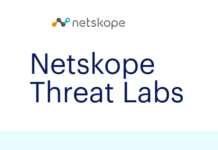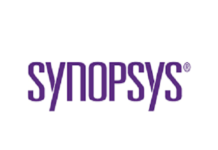
The world of business has changed. There are so many things to keep track of these days, so many new and terrifying threats. It used to be that the only thing you had to worry about was your competitor and the fickle whims of the market. Now, with more and more of global business and vital functions moving online, the most terrifying threat facing modern corporations come from cyber attacks by bad actors. The age of digital business is here, and there’s no going back. It’s time to take steps to protect yourself from the dangers that come with it.
Understanding the methods used by those who would see your company suffer is vital to protecting yourself from them. Hacker techniques are growing more sophisticated, and their attacks more brazen and bolder. Corporate espionage, holding your business hostage, and even foreign-sponsored cyberterrorism are threats you must consider in your operations. In this article, we’ll explore some of the ways that hackers can attack your business by going over some of the most high-profile cyber-attacks in the corporate world.
Ransomware

One of the more frustrating kinds of cyber attack is also one of the most common kinds of cyberterrorism. Ransomware is simple, yet insidiously effective. It works by infiltrating your network and locking you out of vital functions, preventing your systems from doing anything. This is commonly achieved with an automated worm or virus, but can sometimes be caused by direct intervention. From there, the perpetrator demands a payment, usually an insanely high one, to return system function to you. Ransomware is unique in that it isn’t defined so much by the method so much as it does the effect it produces. No matter how you get there, if your system is locked down and you’re locked out, and the hacker is demanding money, you’ve been hit by ransomware.
Ransomware is one of the newer methods on the digital block. It became a household name in 2017 with the WannaCry attack. WannaCry targeted Windows computers, exploiting a vulnerability to encrypt infected users’ files. The attack was massive, affecting corporations like Boeing, Honda, and Fedex, as well as several universities and both foreign and domestic government agencies. It was only stopped when a researcher discovered a digital kill switch in the ransomware’s code, which led to the end of the attack. Millions of dollars in damages had already been done, and without the discover of the kill switch that number could have reached billions. You can find more information on WannaCry here.
Not every ransomware attack can be expected to have so powerful an Achilles heel. The only surefire defense against ransomware is preventative. Once a hacker has your system locked or files encrypted, your choices are to pay up or suffer a complete inability for your business to function. Staying on top of your digital defenses is the only way to make sure you’re staying safe from ransomware. A wave of attacks in 2021 targeted hospitals, shutting down vital care until the ransom was paid. If hackers are willing to target hospitals and prevent the sick from treatment in the name of a payday, they have no scruples about targeting your company.
Man in the Middle
A popular choice for the enterprising hacker that doesn’t draw a lot of attention is the Man in the Middle, or MitM attack. This attack is especially sneaky, as it doesn’t target a network directly. A hacker inserts themselves into the communications between two networks and simply collects intelligence from them. Financial records and reports, passwords, and other sensitive information is intercepted and collected. This is an especially vicious method due to its difficulty to detect or properly attribute. Since the information sent is going to a legitimate destination, and the hacker only collects what’s already being sent, most MitM attacks go completely unnoticed – that is, until the hacker uses the information to nefarious ends. These attacks are so dangerous that companies like Equifax have pulled apps from markets over them as you can see at https://www.fastcompany.com/40468811/heres-why-equifax-yanked-its-apps-from-apple-and-google-last-week.
As with ransomware, prevention is key here. MitM attacks rely on network vulnerabilities, special software, and poor choices on the part of either the sender or the receiver to work. While some instances can stem from previously inserted malware or viruses to do the dirty work, most attacks come from utilizing unsecured methods for communication. While everyone knows to be careful of public Wi-Fi, like those found if coffee shops or libraries, many make that rookie mistake anyway. The problem isn’t always the corporation, either: a client or customer who doesn’t understand these things puts the information at risk every time they open their computer at a café.
Internet of Things

Here we come to the cleverest, least known method for cyber aggression: exploiting your company’s thermostat or lightbulb. It may sound like a joke, but savvy hackers understand that sometimes the best way into a network is through what’s called the Internet of Things, or IoT. An IoT intrusion relies on the increasing interconnectivity and digitization of modern living to find vulnerabilities in a network. Is your thermostat controlled by an app or remotely from your computer? How about your lighting system? What about your biometric scanners, or your smart security systems? Or your employees’ smartphones or fit bit watches? Anything that’s automated is a potential point of attack.
IoT intrusions don’t just threaten your business, they can directly threaten you and your employees. Medical devices, such as pacemakers and internal insulin pumps, often rely on wireless connectivity to allow doctors and patients to monitor their health. Anything connected to Wi-Fi is a potential target for hackers, as researchers at the Black Hat security conference in 2010 demonstrated. A chain of connections between an employee’s medical device, the smartphone they use for monitoring, and your corporate network could be exactly the vulnerability a hacker is looking for.
You can be forgiven for not even considering that your company could be vulnerable just because you want to remotely control small elements of the day-to-day function of the office. Most people aren’t even aware of the idea of the Internet of Things. Hackers, however, are keenly aware of the potential the IoT has for making your life miserable. Once they infiltrate the network through one of these usually unsecured access points, they can launch any manner of cyberattack. As always, the best way to protect yourself is prevention.
There are many things you can do to make sure your company is safe from cyber aggression. Reaching out to a computer security service for cybersecurity is never a bad idea, as they can catch vulnerabilities you might miss. Making sure that your networks are secured and that all possible points of attack are accounted for is also important. In today’s modern world, preventing cyber aggression is vital to making sure your business is safe.

















